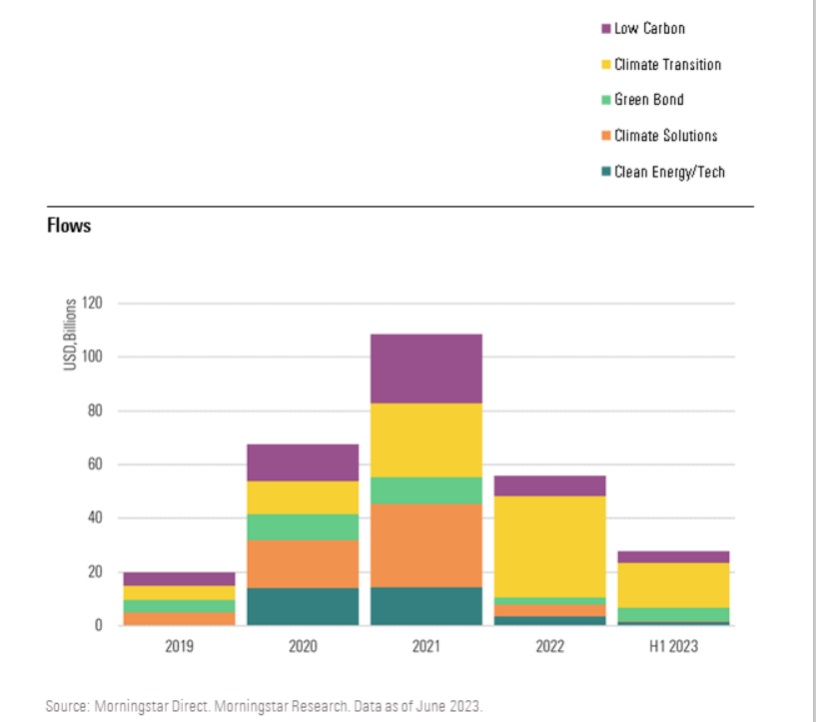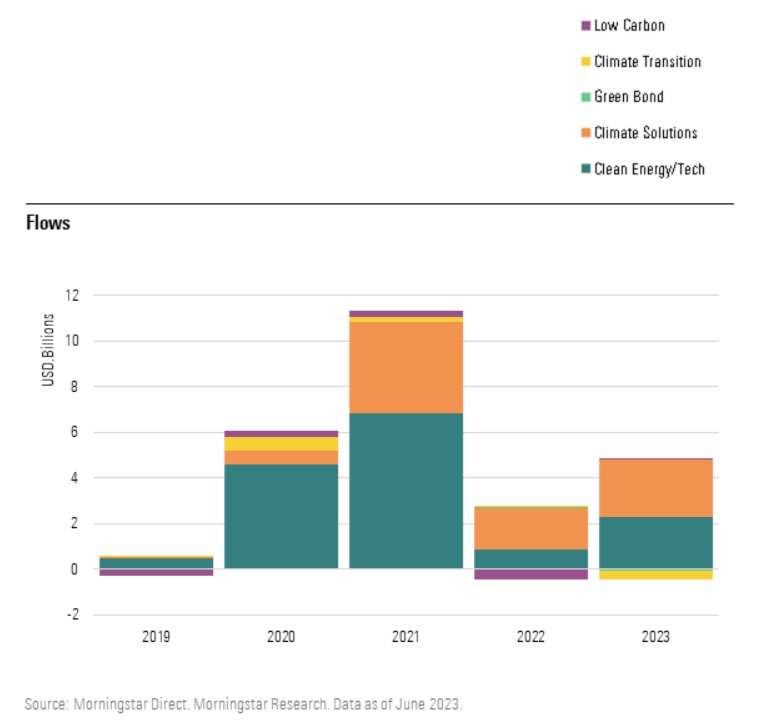Whilst global demand for climate conscious funds has slowed down in 2023, investors appear to have changed their strategy and are now banking on funds with a transition angle.
The combination of inflation, rising rates and volatile energy markets has created a challenging market environment for climate-focused investment strategies with global flows into climate funds having slowed down considerably in 2022 and 2023, according to Morningstar data.
At their peak in 2021, climate funds attracted more than $100bn of new investments, in H1 2023, this slowed down to around $30bn.
Having said that, total assets invested in climate-related funds are still in the rise, as of mid-2023, they stood at $450bn, compared to less than $50bn in 2018.
Moreover, fund flows suggest an interesting pattern unfolding across the globe, with climate conscious investors increasingly turning towards transition strategies, rather than focussing on carbon footprints alone.
Hortense Bioy, global director of Sustainability Research at Morningstar said: “Climate transition has become the most popular climate strategy in Europe. What investors find appealing about these strategies is that they aim to offer the best of both worlds. They aim to decarbonize portfolios and at the same time also provide exposure to climate solutions. They tend to invest in a mix of companies that are better prepared for the transition to a low carbon economy.”
_____________________________________________________________________________
Net Zero Investor's Annual Conference | 11th December 2023 | London
_____________________________________________________________________________
Indeed, more than 60% of climate funds in Europe are now labelled as climate transition funds, while funds focussing on a low carbon footprint only account for 20%. Climate transition strategies in Europe also attracted most of the new money in 2023.

This picture is replicated in the US, where inflows into climate transition assets accounted for almost all new money in 2023 whilst withdrawing money from clean energy and tech funds.
The pattern is somewhat differently in China, where climate conscious investors appear to be more interested in climate solutions.

The shift towards climate transition strategies suggests that many investors are open to choosing funds that might have a higher carbon footprint, in order to achieve greater real world impact in tackling climate change.
Having said that, Morningstar research revealed that on average, climate transition funds tend to have a lower carbon footprint than low carbon fund, as data by Morningstar Direct revealed.
Meanwhile funds offering access to climate solutions and clean energy sources tend to have a carbon footprint that is at least twice as high as that of transition funds.
While the data above is focused on funds and excludes Mandates, it offers merely an indication of trends in institutional markets. However, there is anecdotal evidence that institutional investors are increasingly focused on transition assets.
An example is OMERS, the $127.4bn plan released its first climate action plan in September, committing $3bn of investments into high carbon companies that will play a vital role in the transition to net zero.





